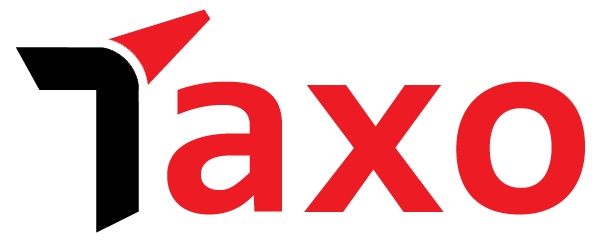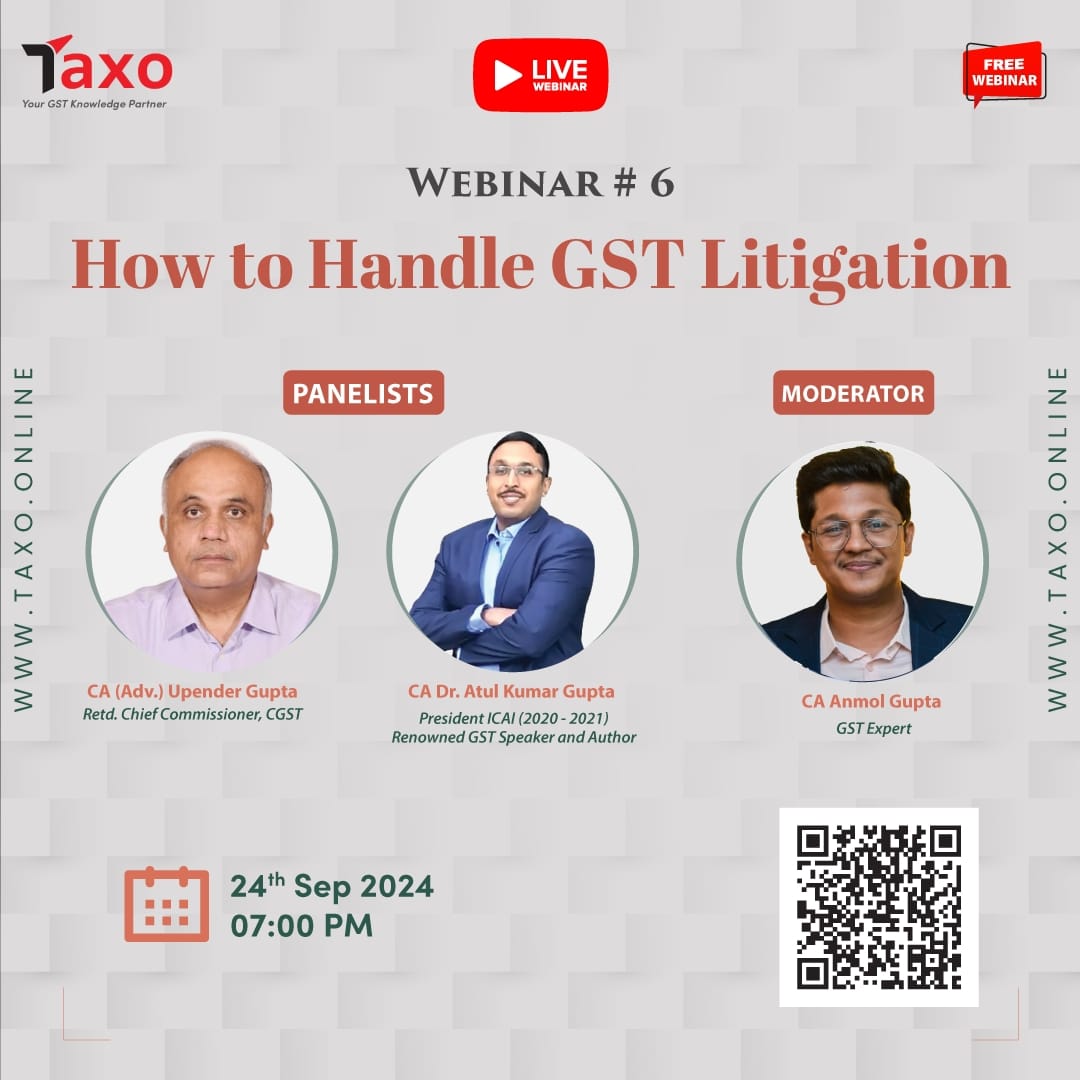Curbing the Scam of ITC: Rule 36(4) of CGST Rules’2017
Input tax Credit Scheme under Goods and Service Tax Law enables every registered taxable person to take credit of the taxes paid on inputs, input services and capital goods which are received with the specified tax paying documents and are used in the manufacture/sale of taxable final products or rendering of taxable output services. The Goods and Service Tax Act permits the utilization of the credit so earned towards payment of outward tax liability.
However, since the onset of GST and the Government not being able to implement GSTR-2/GSTR-3 or the new return system, the assessee at large have been taking undue advantage of the loopholes under GST Act due to non-implementation of the matching concept wherein details uploaded by the suppliers in GSTR-1 were supposed to be reconciled with the GSTR-2A of the recipient on the basis of which Input tax Credit had to be availed.
In order to put a full stop to the malpractices of the registered taxpayers and to curb the practice of misutilisation of ITC and issue of fake invoices, the Government introduced Rule 36(4) w.e.f. 09th October 2019 providing restriction on availment of ITC based on uploading of invoices by Supplier.
What is Rule 36(4) of CGST Rules’2017?
Rule 36(4) of CGST Rules has been inserted vide notification No. 49/2019, Central Tax dated 09-10-2019.
The bare text of rule 36(4) as inserted in CGST rules, 2017 states that, “Input tax credit to be availed by a registered person in respect of invoices or debit notes, the details of which have not been uploaded by the suppliers under sub section (1) of section 37, shall not exceed 5 percent of the eligible credit available in respect of invoices or debit notes the details of which have been uploaded by the suppliers under sub-section (1) of section 37.”
The said notification imposed restriction on the availment of ITC from time to time in a phased manner as follows:
| Notification No. | Additional % of ITC appearing in GSTR-2A | Effective Date |
| 49/2019 dated 09/10/2019 | 20% | 09/10/2019 |
| 75/2019 dated 26/12/2019 | 10% | 01/01/2020 |
| 94/2020 dated 22/12/2020 | 5% | 01/01/2021 |
In simplified form, it could be said that the net eligible ITC that could be availed by a registered person shall be for the invoices appearing in its GSTR 2A and additional 5% (of ITC as per GSTR 2A) for the invoices not appearing in GSTR 2A.
Earlier if GSTR-2A reflected less amount than books of accounts, taxpayer could still claim the ITC as per input tax credit register in GSTR-3B.
Since, the insertion of this rule, the ITC is restricted to the extent of 5% of eligible ITC. That is a registered person shall now avail the eligible input tax credit with respect to the invoices or debit notes that are uploaded by its vendor/supplier as reflecting in its GSTR 2A for a particular month. Also, additional 5% of the eligible input tax credit reflecting in its GSTR 2A shall be availed with respect to the invoices or debit notes that are not uploaded by its vendor/supplier for a particular month.
What is the significance of 5% of the eligible ITC that can be availed over and above the input tax charged on the invoices uploaded by the supplier?
The additional ITC i.e., the percentage specified (5%) is just a cushion given by the Government assuming that if the businesses were conducted as per the GST Provisions, complying with the requirements as specified under the GST Act that is all the invoices were being uploaded in GSTR 1 by the suppliers and the availment of ITC was done by the recipient on the basis of invoices being reflected in his GSTR-2A, then there would have been only a few cases were such discrepancy would have prevailed. For such discrepancy, where certain invoices were not being uploaded and wherein the recipient have made bonafide purchases, a capping of 5% of the eligible ITC was given.
After understanding the basis for introduction of Rule 36(4), let us now move on to the implementation of the Rule.
In order to begin with its practical implementation, we will firstly have to understand as to what is the meaning of eligible ITC which has to be availed by the recipient and for which the cushion of 5% is given?
In order to calculate the capping of 5% only those invoices which are eligible for ITC and are reflecting in GSTR 2A have to be considered. In order to maintain the uniformity for the calculation of 5%, the basis of invoices as reflected in GSTR-2A which determines eligibility of ITC has been considered.
The clarification states that ‘calculation would be based on only those invoices which are otherwise eligible for ITC’, that is any reversals done post availment of ITC in GSTR-3B i.e., reversal as per Rule 42 & 43 of CGST Rules shall not be reduced from the value of eligible ITC for determining the additional availability of 5% of ITC.
In simplified terms, Eligible credit would mean:
| Total Input Tax Credit | XXX | |
| Less | Input and input services intended to be used “exclusively” for non-business purposes (T1) | XXX |
| Less | Input and input services intended to be used “exclusively” for making exempted supplies (T2) | XXX |
| Less | Block credit (Sec. 17(5)) (T3) | XXX |
So basically rule 36(4) provides that if any invoice or debit note is not uploaded by supplier in his GSTR-1 i.e., not in GSTR-2A of recipient of supply, then the ITC for the same invoices or debit note can be claimed to the extent of 5 percent of total eligible credit of taxpayer.
Further, it has to be noted here that the net eligible input tax credit availed for a month shall be restricted to the eligible input tax credit as appearing in the ITC register in the books of accounts of registered person irrespective of the month in which it is availed.
Let us understand with an example:
XYZ is a manufacturing company. For the month of January’20, it has 50 invoices (for inward supplies) of ITC amounting to Rs. 10 lakhs from various suppliers. But invoices of ITC amounting to Rs. 6 lakhs have been uploaded by suppliers.
| Particulars | Before | After |
| ITC as per invoices of XYZ | 10,00,000 | 10,00,000 |
| ITC as per suppliers (uploaded in GSTR-2A) | 6,00,000 | 6,00,000 |
| Input tax credit not in 2A | 4,00,000 | 4,00,000 |
| ITC that can be claimed | 4,00,000 | 30,000(600000*5%) |
| Total ITC that can be claimed in the GSTR-3B | 10,00,000 | 6,30,000 |
| ITC not allowed in the GSTR-3B for the month of January’20 | Nil | 3,70,000 |
Certain additional points to be considered while mapping ITC register with GSTR-2A as per Rule 36(4):
- The restriction imposed under the said rule has to be self assessed cumulatively (not supplier wise) by the registered person and shall be applicable only on invoices or debit notes on which credit has been availed on or after 9th October 2019.
- GSTR-2A as available on the due date of filing of return for outward supply in form GSTR-1 shall be considered for the purpose of mapping of GSTR 2A and ITC register (Books of accounts).
For Example, where GSTR-2A for the month of January’20 reflected ITC amounting to Rs. 15 lakhs as on 11th February’20 and a particular supplier filed his GSTR-1 on a later date say on 15th of February’20 wherein an additional ITC of Rs. 3 lakhs was reported by him thus ITC as per GSTR-2A extracted on 15th February’20 being 18 lakhs, the GSTR-2A as on due date of GSTR-1 i.e. 11th February’20 with ITC of 15 lakhs has to be considered for mapping with the ITC register for the month of January’20.
Non-applicability of Rule 36(4) in certain cases:
It is pertinent to note here that, ITC on the following shall be taken completely as eligible credits as the same does not come under the purview of section 37(1) of CGST Act, 2017: –
- IGST paid on imports;
- Tax paid under reverse charge mechanism (RCM) and;
- Credit received from input service distributor (ISD)
It may be noted here that, as per Circular No. 123/42/2019-GST the phrase ‘documents issued under RCM’ has been used. It is pertinent to note that recipient is required to issue self-invoice under section 31(3)(f) only when RCM supplies are received from unregistered supplier. Therefore, in cases where RCM supplies is from registered person, supplies are uploaded by the supplier itself in GSTR 1 as per section 37 and hence, it appears that such supplies are covered under rule 36(4).
A contradictory view that may be taken here is that the intention of the Government to introduce Rule 36(4) is to ensure that the payment of tax should have been done in relation to which ITC has been availed. Therefore, if the payment of tax is made by the recipient on RCM supplies then such RCM supplies are outside the purview of rule 36(4) as in the case of RCM invoices ITC is taken only after making the payment of taxes to the Government.
Example on practical application of Rule 36(4):
Total ITC for the month of January’2021 – Rs. 110 (90 Eligible + 20 Ineligible)
| GSTR-2A month | ITC appearing in GSTR-2A | Eligible ITC in GSTR-2A | Ineligible ITC in GSTR-2A |
| January’21 | 60 | 45 | 15 |
| February’21 | 30 | 30 | 0 |
| March’21 | 20 | 15 | 5 |
| Total | 110 | 90 | 20 |
| GSTR-2A month | Eligible ITC in 2A + 5% of Eligible | Eligibility as per Rule 36(4) | Cumulative ITC availed |
| January’21 | 47.25 [45+(45*5%)] | 47.25 | 47.25 |
| February’21 | 31.5 [30+(30*5%)] | 31.5 | 78.75 |
| March’21 | 15.75 [15+(15*5%)] | 11.25* | 11.25 |
| Total | 94.50 | 90 | 90 |
* Maximum ITC of Rs. 90 can be availed i.e., eligible credit as per ITC register (Books of accounts) can be availed in GSTR 3B
FAQs in relation to applicability of ule 36(4):
| Q. | Whether filing of GSTR 1 by supplier is mandatory for restriction under Rule 36(4)? |
| A. | Rule 36(4) says ITC is available on invoices which have been uploaded in GSTR 1 by the supplier, hence it appears that irrespective of GSTR 1 being filed or not by the supplier, once the invoice is available in GSTR 2A of the taxpayer it should be sufficient compliance of Rule 36(4). However, in practical scenario, ITC should be availed only with respect to those invoices where the return has been filed. |
| Q. | Whether the additional ITC (5%) to be availed each head wise i.e., IGST/CGST/SGST or on total basis? |
| A. | The calculations of restriction and additional ITC availment should be each head wise. |
| Q. | Whether invoice-wise breakup is must for availing the additional ITC of 5% as per Rule 36(4)? |
| A. | Rule 36(4) provides for adhoc availment of additional 5% of eligible matched credit, hence a proper invoice wise break-up is not necessary for compliance purposes. |
| Q. | FORM GSTR-2A being a dynamic document, what would be the amount of input tax credit that is admissible to the taxpayers for a particular tax period in respect of invoices / debit notes whose details have not been uploaded by the suppliers? |
| A. | The amount of input tax credit in respect of the invoices / debit notes whose details have not been uploaded by the suppliers shall not exceed 5% of the eligible input tax credit available to the recipient in respect of invoices or debit notes the details of which have been uploaded by the suppliers under sub- section (1) of section 37 as on the due date of filing of the returns in FORM GSTR-1 of the suppliers for the said tax period. The taxpayer may have to ascertain the same from his auto populated FORM GSTR 2A as available on the due date of filing of FORM GSTR-1 under sub-section (1) of section 37. |
| Q. | When to avail credit on invoices received from supplier’s filing GSTR 1 on quarterly basis? |
| A. | Invoices uploaded by supplies in quarterly GSTR 1 would appear in the GSTR 2A of last month of quarter in which it is uploaded. Hence, the credit on the same can be availed belatedly in the last month of quarter only if not availed within the limit of additional 5% credit. |
| Q. | Whether the new introduced Form GSTR 2B will be helpful for calculation of credit as per Rule 36(4)? |
| A. | GSTR 2B is a static auto-drafted document, say for the January 2021, it will contain all the invoices uploaded by supplier from 12th January to 11th February irrespective of the date of invoice or period in which it is uploaded by the Supplier.However, GSTR 2A would be important for reconciliation of older invoices on which credit is availed late but filed timely by their supplier. |
| Q. | What if the procedure under Rule 36(4) is not followed? |
| A. | For any excess claim, interest under section 50 and penalty is imposable. |
| Q. | Whether Rule 36(4) is Legally Valid? |
| A. | The said rule was introduced in connection with Section 43A i.e., the new return system wherein sub section 4 of the said section restricts the availment of ITC up to a maximum of 5% of the eligible ITC as per GSTR-2A in relation to the invoices or debit notes not appearing in the GSTR-2A. However, the said section has not been notified yet but Rule 36(4) has been implemented from 9th October’2019. Thereby causing a procedural lapse in the system due to which compliance of the said rule is causing hardship to the tax payers by imposing an additional compliance of mapping GSTR-2A/2B with the ITC register on a monthly basis and then cumulatively following the procedure for the entire year.The same has also been challenged in the High Court for Judicature for Rajasthan – Jodhpur with the plea that amendment made to the rule has imposed unreasonable and arbitrary conditions. The petitioner contended that the right to avail ITC cannot be taken away by imposing restrictions contained in the provisions of Section 43A which is yet to be notified.The petitioner argued that the restriction has been put on the basis of the acts of the supplier, on which the recipient has no control.Further, where a registered person is taking inward supplies from the supplier filing returns on quarterly basis, the said registered person cannot claim such ITC on a month-on-month basis as the same would be reflected only on quarterly filing of GSTR-1 thereby blocking the working capital for two months in every quarter. |
Finance Bill’2021:
The Finance Bill 2021, have proposed certain changes in CGST Act, 2017 & IGST Act, 2017 in order to curb input credit frauds and safeguard Government revenues.
Section 16 of the CGST Act has been proposed to be amended via Clause 100 of the Finance Bill which states the eligibility condition to avail ITC –
As per clause 100, a new clause (aa) to sub-section (2) of the section 16 of the CGST Act is being inserted to provide that input tax credit on invoice or debit note may be availed only when the details of such invoice or debit note have been furnished by the supplier in the statement of outward supplies and such details have been communicated to the recipient of such invoice or debit note.
Analysis:
Through this amendment one more additional condition has been added for determining the eligibility of ITC. ITC would not be available to the recipient if the detail of such invoice or debit note has been not furnished by the supplier in GSTR-1 and hence not being reflected in recipient’s GSTR-2A/GSTR-2B. Hence, this amendment gives statutory backing to much disputed and deliberated upon Rule 36(4) of the CGST Rules, 2017.



